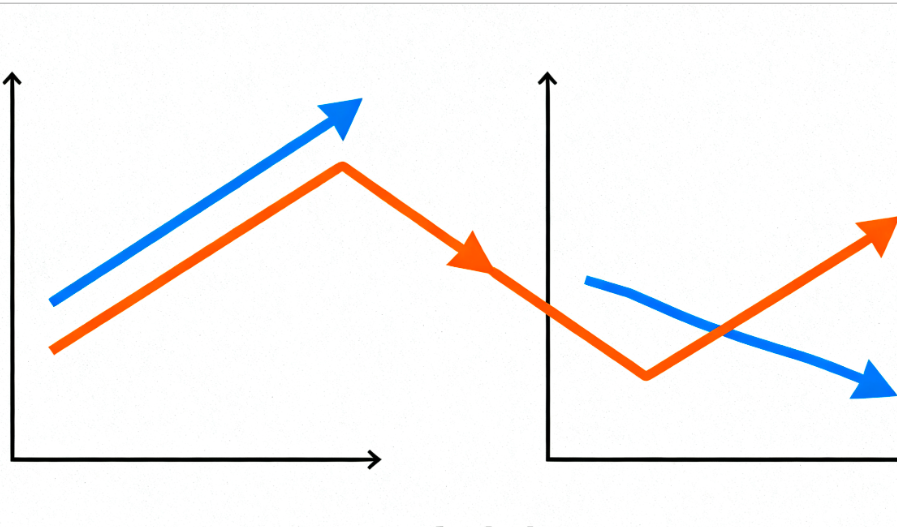
The global geopolitical landscape is undergoing profound restructuring, with the comprehensive, hybrid, and protracted nature of modern warfare becoming increasingly evident, and the capability for military cross-domain coordination based on digital systems being rapidly deployed. As a crucial strategic tool in total war, modern hybrid warfare, and digital financial warfare, digital currency is essentially a new form born from the evolution of traditional financial warfare under modern informationalized and intelligent warfare patterns. It is reshaping traditional models of cross-border capital flow and resource mobilization during wartime and is gradually becoming a key strategic instrument in geopolitical competition.
Basic Principles and Main Functions
Cryptographers have long held an idea: can physical cash be encrypted and signed like an email and sent from one end to the other? This was the original intention behind the birth and development of the earliest digital currency. From the "father of digital currency" David Chaum to the "legendary figure of cryptocurrency" Satoshi Nakamoto, digital currency has undergone multiple rounds of historical transformation and reshuffling. It has evolved from a single Bitcoin into a vast ecosystem with diverse types, including cryptocurrencies, stablecoins, and central bank digital currencies. Each type of digital currency has its own characteristics in terms of function, purpose, and technical background, but its essence is no different from traditional currency, possessing basic functions such as a store of value, medium of exchange, and unit of account. Before 2022, the total market capitalization of digital currency assets grew rapidly. In recent years, due to involvement in multiple global geopolitical conflicts, digital currency has begun to enter the field of military application. By providing fast, secure, and anonymous transaction features, it has laid the foundation for the subsequent militarization of digital assets.
The underlying technology of digital currency—blockchain—is essentially a decentralized distributed ledger. It packages transaction information into "blocks" and forms an immutable chain in chronological order, ensuring the integrity and security of transaction data. In battlefield environments, this characteristic could even influence the success or failure of military operations. Although Bitcoin has not demonstrated a "first-mover safe-haven attribute" similar to gold in geopolitical conflicts, as warfare evolves and global risk preferences are reconfigured, the unique decentralized nature of blockchain strengthens its role as a "non-sovereign asset." For example, after the outbreak of a local geopolitical conflict, crypto prices typically form a trend change from pullback to rebound within a week, highlighting the high sensitivity and liquidity adaptability of the crypto market to geopolitical conflict information. Simultaneously, geopolitical conflicts have once again reinforced the three-stage rhythm of "wartime volatility - safe-haven correction - on-chain monitoring," which has led to cryptocurrencies being regarded as important wartime safe-haven tools.
The ability of digital currency to withstand the resilience test of wartime markets and maintain economic operation and livelihood security in war zones is crucial for fund protection in armed conflicts and war scenarios. From the perspective of fund dispatch speed, the digital nature of digital currency makes the dispatch of war funds more flexible and faster, facilitating wartime fund transfer and value preservation. In wartime scenarios, when physical banking infrastructure is paralyzed or subject to enemy financial sanctions, digital currency can become a hidden channel for asset transfer, enabling rapid capital circulation and improving battlefield mobility. From the perspective of fund source distribution, the anonymity of cryptocurrency can diversify and conceal the sources of wartime funds, facilitating cross-border solidarity and supporting humanitarian relief. Wartime funds typically come from national budgets and are used for military expenses and equipment purchases, but these funds are easily monitored and tracked by the enemy during wartime. The blockchain technology of cryptocurrency disperses fund sources and, through anonymity, reduces the enemy's ability to block and interfere with funds, decreasing the probability of being tracked and intercepted, thereby potentially changing the course and outcome of war and laying the foundation for the contemporary militarization application of digital currency.
Review of Digital Currency's Wartime Performance
As local geopolitical competition intensifies, the trend of digital currency militarization is accelerating. From the Russia-Ukraine conflict to Middle Eastern wars, the wartime performance of digital assets is embedded in scenario-based restructuring: each round of geopolitical shock reshapes the perception of digital assets' risk attributes, and each war becomes a stress test for cryptocurrency's safe-haven function.
Resource-Based Digital Currency Military Alliance – The "resource tokenization" model represented by resource-based countries. Through resource tokenization, resource-based countries convert natural resources into digital currency using information technology and explore new paths to financial autonomy through national alliances to evade wartime financial sanctions, maintain cross-border payments and military trade settlements, and reduce the risk of wartime exchange rate fluctuations. For a long time, some countries have faced economic sanctions represented by the international settlement system SWIFT. In February 2018, the Venezuelan government officially issued the oil-backed cryptocurrency Petro. In January 2019, Iranian banks jointly launched the gold-backed cryptocurrency PayMon.
Agile Cryptocurrency Military Assistance – The "decentralized crowdfunding" model represented by small and medium-sized countries and regions. Utilizing advantages such as instant arrival, low cost, flexibility, and convenience, small and medium-sized countries and regions can absorb small anonymous global financing in a short period, reducing fundraising time and transaction costs, balancing geographical disadvantages through digital capabilities, and achieving cross-border solidarity to support military relief.
Sanctions-Based Cryptocurrency Military Operations – The "on-chain sanctions" model represented by developed countries. Developed countries attach great importance to military technical intelligence and track and freeze enemy digital assets through multi-departmental collaboration and blockchain technology. Since October 2023, Israeli authorities have shut down dozens of Hamas cryptocurrency accounts and confiscated millions of dollars worth of cryptocurrency. This measure was completed through collaboration between national cyber units, intelligence agencies, and global cryptocurrency exchanges, aiming to track and freeze enemy digital assets, cut off their financial channels for fundraising and organizational operations, and weaken their economy and regional influence. This also marks the first time digital currency has been used for financial sanctions in international politics and military conflicts.
Future Trends and Reflections
History may not simply repeat itself, but paths often echo. The development journey of digital currency is legendary; it has come a long way from virtual fantasy to a pillar of the real economy. With technological progress and the gradual improvement of regulatory frameworks, digital assets like Bitcoin will redefine money, value storage, and financial systems, and are expected to play a more important role in wartime scenarios. In the future, digital financial systems will be further embedded in modern hybrid warfare. They can serve as survival tools for civilians, fundraising channels for nations, and also become invisible battlefields for geopolitical competition. So, how can a balance be found between finance "running faster" and national defense "standing firmer"? In wartime scenarios, where is the room for mediation in the game of digital currency sanctions and countermeasures? Behind this new type of composite strategic transformation reflects profound changes in the global financial landscape, digital technology, and geopolitical competition.
The future development path of digital currency is not smooth sailing. Under the shadow of war, in the crypto game, are crypto assets a "safe haven" or "wartime chips"? Restrictive factors such as limited market acceptance and liquidity, uncertain regulatory policies, high volatility of coin value, and high technical barriers will still be major obstacles facing the industry's development. In the future, when geopolitical competition enters a stage of local stalemate or even prolongation, the crypto market may no longer show drastic reactions to single war-related news but will revolve around multiple war-related issues, such as war fundraising, sanctions evasion, and financial decoupling, causing cryptocurrency to continue fermenting at the level of international public opinion and national regulation. In this regard, the on-chain transaction activity and cross-border flow capacity of cryptocurrency may become important variables in policy research for various countries.
The militarization application of digital currency will break through conventional functions and transform into a multi-functional integrated platform with strategic significance such as security assurance, combat support, and digital countermeasures. In this regard, the key link in the wartime application of digital currency will be manifested in the deep integration of financial efficiency and supply chain resilience. On one hand, enhancing the stability of digital currency strategy to ensure sufficient wartime reserves to cope with geopolitical competition; on the other hand, using digital currency to improve the resilience of the defense supply chain, ensuring digital transactions are secure, efficient, and traceable. Furthermore, the militarization process of digital currency also needs to balance the "decentralized" nature of blockchain technology with the "centralized" requirements of military management. It is worth noting that the "Defense Blockchain Pilot Program" mentioned in the US "National Defense Authorization Act (NDAA) for Fiscal Year 2025" may become an important strategic tool for its future "financial defense," and its potential impact on the international geopolitical landscape and the future direction of the global financial system cannot be ignored.
















